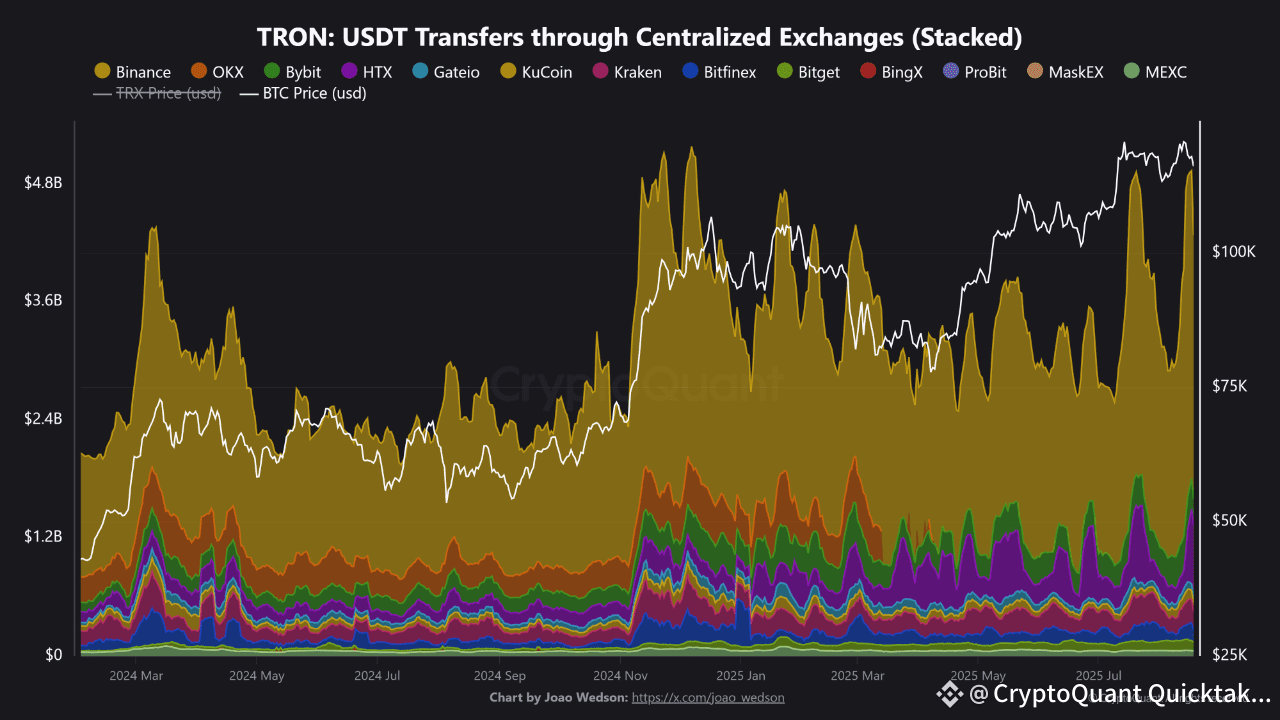USDT transfer volumes on the TRON network have spiked sharply. Historically, such spikes often signal that the ongoing market pullback is likely to continue.
USDT inflows to exchanges tend to cluster around market tops. This pattern usually reflects “late buying” behavior and indicates that Bitcoin’s downward move may persist.
When we separate retail and whale activity, the picture becomes clearer:
Retail investors typically send USDT to exchanges at the top, trying to enter positions late. This creates signals of delayed buying pressure.
Whales or institutions, on the other hand, use USDT transfers as part of a different liquidity engineering strategy: they move stablecoins in advance, push the market downward, then accumulate at lower levels before initiating the next upward phase.
Ultimately, once the transferred USDT is fully deployed into active buying, the market tends to stabilize, and the next stage of upward movement begins.

Written by BorisD


